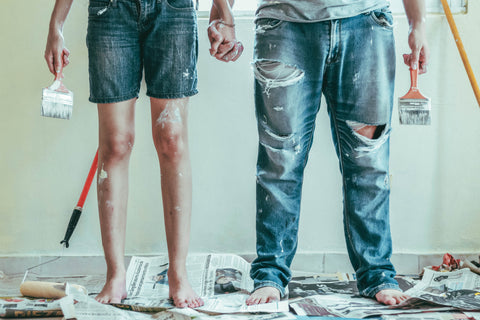





After hours of sketching and further brainstorming, the next step was to head to the workshop and prototype. Starting with some quick basic cardboard prototypes to test the shape and form this first step allowed for a 3D visual representation of what was now refined on paper to be produced. Prototyping would then progress to using some of the materials that were lying around in the studio, such as plastic, rubber, screws etc to start to develop more functional and robust models to test whether the whole concept was even functionally feasible.
Once initial prototyping had been done and a better idea of the actual design had been realised, it was time to sit down at the computer, and using CAD software, work on bringing the design into a more technically feasible world. During this process, 3D printing was key. Using the university’s FDM (Fused Deposition Modelling) machines Vicky was able to prototype some of the individual plastic components that would make up the final product. This was crucial in order to keep a reality check on what was being designed on screen would be fit for purpose in terms of ergonomics and manufacturing feasibility in the real-life world. These are just a few examples of the prototypes Vicky came up with. Bear in mind – the earlies prototypes were done on a student budget of the occasional £20/£30 at a time!! The more refined models were more in the region of a few hundred pounds (£100-£300) at a time on the budget of a graduate start-up entrepreneur.

In total, Vicky worked through 76 design configurations to identify the optimum product that worked in terms of functionality, aesthetics, ergonomics and manufacturing feasibility.
Here is just a bit more insight into some of the features we have considered in the design of the Recoil pads.
When designing the spring system, Vicky came up with different arrangements and numbers of springs to be used in the design, and tested the effectiveness of each with Strathclyde’s Bioengineering department. After testing, the circle arrangement with the 6 springs was the winner in terms of pressure reduction. Following user feedback of each configuration we also found that not only does this arrangement reduce the pressure on the knee significantly, it also allows the 360 degree pivoting which gives a better range of movement for users therefore making this feature a winner on not only pressure reduction, but functionality too.
In addition, our spring system also required careful consideration of the optimum spring rate for the range of users who would benefit from the pad. What we mean by this is identifying a spring that will compress enough to relieve the pressure but not bottom out (meaning completely compress). A spring with too low a spring rate may bottom out whereas a spring with too high a spring rate may not compress at all – both situations making the design ineffective. It required a lot of work identifying weight ranges of users and also observing kneeling styles. However the hard work paid off, because we eventually got the perfect springs.
This was a difficult one. We had to use a material that would not only withstand constant use on rough surfaces, but be soft enough to not damage or mark softer flooring such as wood flooring or porcelain tiles etc. We experimented with a number of different types of plastic and grades of shore hardness, before identifying a solution that would meet both requirements.
Out of all of the features, it is our suspension technology that defines us. When you try them, it’ll feel weird. Some have gone as far as saying “It's how I imagine floating on air would be-no exaggeration”
Once the final version was chosen, it was time to have it tested against various types of kneepads. The testing was conducted by the Biomedical Engineering Department of the University of Strathclyde (you can view the results of the testing HERE). After thorough testing, the results came back that the pressure on the knee's when kneeling was reduced by 76% than when kneeling without kneepads. They also had a 20% more of a reduction compared with the next best performing competitor knee pad. Not only was the pressure reduced, but as we had hoped, the pressure was spread evenly across the knee joint, which significantly decreases the likely hood of long term damage to the knee joint.
The science and engineering is all well and true, but it means nothing if customers don’t agree. Thankfully, feedback to date has shown they perform the way we designed them too, and our reasoning and technical foundations that we share in this blog is shining true in the product we have today.
